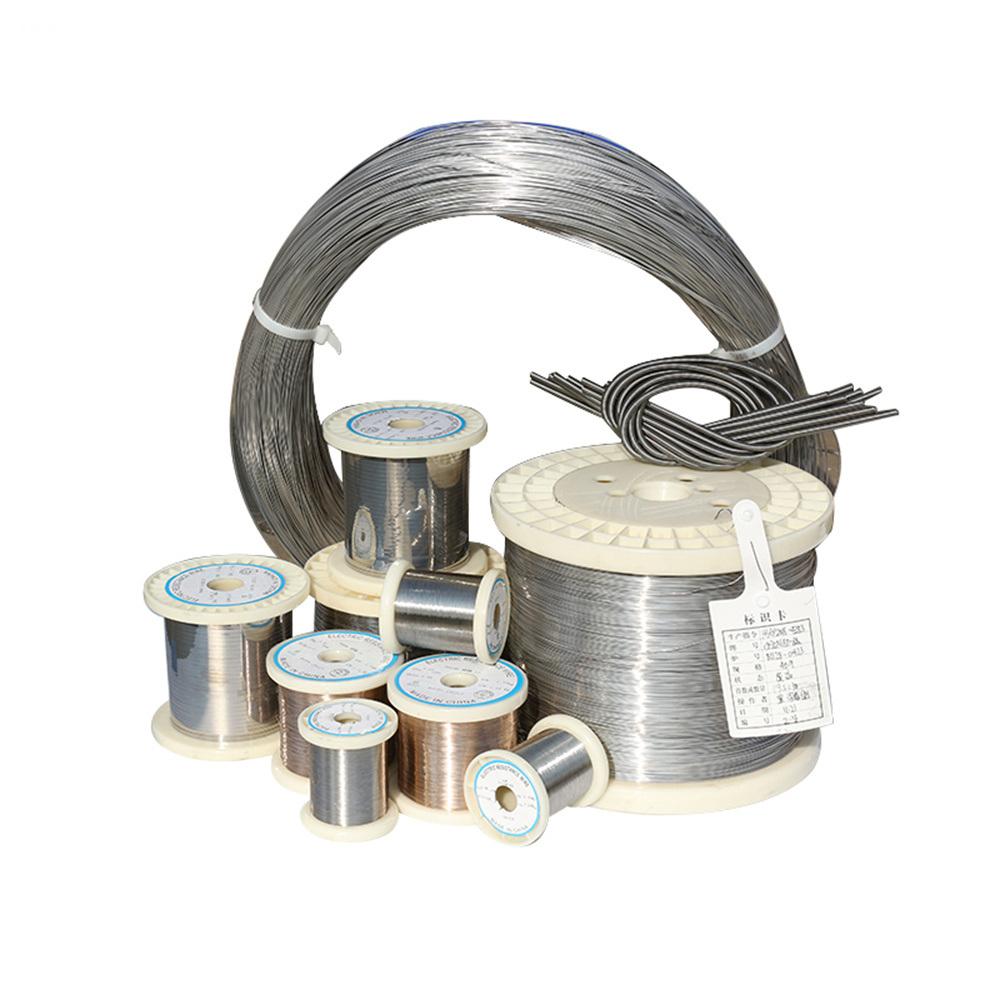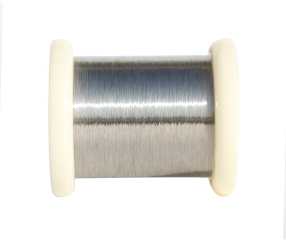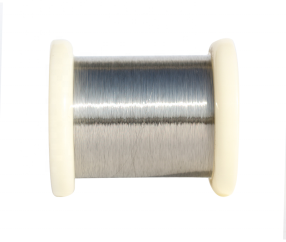
Copper-Nickel (CuNi) Wire in Floor Heating Cables
- Product Details
Copper-Nickel ( CuNi ) Wire in Floor Heating Cables
Copper-nickel (CuNi) wire is commonly used in electric floor heating cables due to its high electrical resistivity, excellent corrosion resistance, and stable heating performance. It provides a consistent and efficient heat output, making it an ideal material for underfloor heating applications.
1. Why Use CuNi Wire in Floor Heating Cables?
✅ High Electrical Resistivity
CuNi alloys (e.g., CuNi44, CuNi23, CuNi10) have a much higher resistance than pure copper, allowing controlled heating without excessive current.
This ensures even and energy-efficient heat distribution.
✅ Stable Heating Performance
CuNi wire maintains a constant resistance over time, preventing overheating or hot spots.
Offers long service life without significant degradation.
✅ Corrosion and Oxidation Resistance
CuNi wires are resistant to moisture, oxidation, and chemical corrosion, making them ideal for bathrooms, kitchens, and outdoor heating systems.
Unlike standard heating wires, they do not rust or degrade in humid environments.
✅ Flexible and Durable
CuNi wires are mechanically strong and can withstand repeated heating and cooling cycles.
They are flexible enough for easy installation, even in thin heating mats.
2. Common CuNi Alloys Used in Floor Heating Cables
| Alloy | Ni % | Resistivity (µΩ·cm) | Characteristics |
|---|---|---|---|
| CuNi44 (Constantan) | 44% | ~49 | High resistance, used for constant wattage heating cables. |
| CuNi23 (23% Ni, 77% Cu) | 23% | ~30 | Medium resistance, used in self-regulating heating cables. |
| CuNi10 (10% Ni, 90% Cu) | 10% | ~25 | Lower resistance, good for low-temperature heating systems. |
3. Types of Floor Heating Cables Using CuNi Wire
1️⃣ Constant Wattage Heating Cables
CuNi44 wire is commonly used due to its high resistance and stable output.
Provides uniform heating, making it suitable for indoor heating in residential and commercial spaces.
🔹 Applications:
✔️ Indoor underfloor heating (tiles, wood floors, laminate)
✔️ Heated driveways and walkways (snow melting)
✔️ Anti-icing systems for ramps and stairs
2️⃣ Self-Regulating Heating Cables
Uses CuNi23 or CuNi10 wires.
The cable automatically adjusts power output based on ambient temperature—more heat in cold conditions and less in warm conditions.
More energy-efficient than constant wattage cables.
🔹 Applications:
✔️ Bathroom and kitchen underfloor heating
✔️ Industrial floor heating (e.g., cold storage facilities)
✔️ Outdoor frost protection systems
3️⃣ Parallel Heating Cables
Uses CuNi resistance wire embedded between two conductive bus wires.
Sections can be cut to custom lengths without affecting performance.
Provides consistent and localized heating.
🔹 Applications:
✔️ Spot heating for cold rooms and greenhouses
✔️ Frost protection for pipes and floors
✔️ Heating for large open areas
4. Structure of a CuNi-Based Floor Heating Cable
A typical underfloor heating cable using CuNi wire consists of:
1️⃣ CuNi Resistance Wire – Provides heat output.
2️⃣ Insulation Layer – Often made of PTFE, silicone, or XLPE for electrical insulation.
3️⃣ Protective Sheath – Ensures durability and moisture resistance.
4️⃣ Grounding Shield (Optional) – Used in wet areas for safety.
5. Advantages of CuNi-Based Floor Heating vs. Other Heating Wires
| Feature | CuNi Wire | Ni-Cr Wire | Fe-Cr-Al Wire |
|---|---|---|---|
| Heating Stability | ✅ Very Stable | ✅ Stable | ⚠️ May degrade over time |
| Energy Efficiency | ✅ High | ✅ High | ⚠️ Medium |
| Corrosion Resistance | ✅ Excellent | ⚠️ Moderate | ❌ Poor in humid environments |
| Lifespan | ✅ 10+ years | ✅ 8-10 years | ⚠️ Shorter (oxidation issues) |
| Flexibility | ✅ High | ✅ High | ⚠️ Brittle |
| Self-Regulating Option | ✅ Yes (CuNi10, CuNi23) | ❌ No | ❌ No |
6. Summary: Why Choose CuNi Wire for Floor Heating?
✔️ Energy-efficient & stable heating
✔️ Corrosion-resistant & long-lasting
✔️ Safe and reliable performance
✔️ Suitable for both indoor & outdoor heating applications






